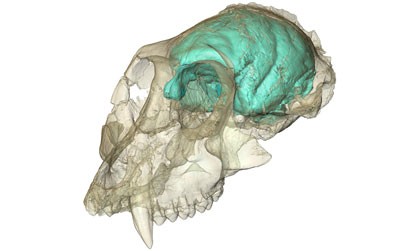The oldest known monkey fossil ever discovered from 15 million years ago apparently housed a small, complex brain according to a new study. This ancient primate species is called the Victoriapithecus where it was taken from a single fossil and uncovered from Lake Victoria in Kenya.
Researchers from Duke University created the first detailed visualization of the ancient monkey's cranial cavity where they discovered how small and complex their brain structures are. Using computer models to develop a 3D representation of the brain, analysis revealed that the primate's brains evolved from a structure that is filled with wrinkles before it expanded in size.
In comparison with their body size, the primates' tiny brain measured around 2.2 cubic inches which is more or less half the size of modern day monkeys today of the same body mass where its brain volume is slightly lesser, like comparing a plum to an orange fruit.
However, even if their brains were relatively small, they also possess significant advantages needed for survival such as the olfactory nerve that controls the sense of smell, that was actually found to be three times bigger than first thought.
According to Lauren Gonzales from Duke University, these ancient monkeys probably had a better sense of smell than any species of apes and monkeys today. Usually in higher primates, the brain is more often than not larger where the olfactory bulb is smaller that leads to better vision and less keener sense of smell.
However, the Victoriapithecus did not have this tradeoff in terms of smell and sight where they have both strong eyesight and sense of smell.
Since biologists lacked detailed fossils from the remnants of these primates, the idea was challenged if primate brains first developed in size or its complexity later or vice versa.
Uncovered in 1997, the Victoriapithecus is one of the few specimens from ancient primates of that time where it is currently housed under the collection of National Museums of Kenya in Nairobi.
Gonzales says that this new study is solid proof that in terms of the primate family tree that also includes apes and humans, it debunks the idea that brains got bigger first than getting more folded and complex after. The Victoriapithecus shows that brain complexity came first where they later developed into bigger sizes.
This new study is published in the journal Nature Communications.



























